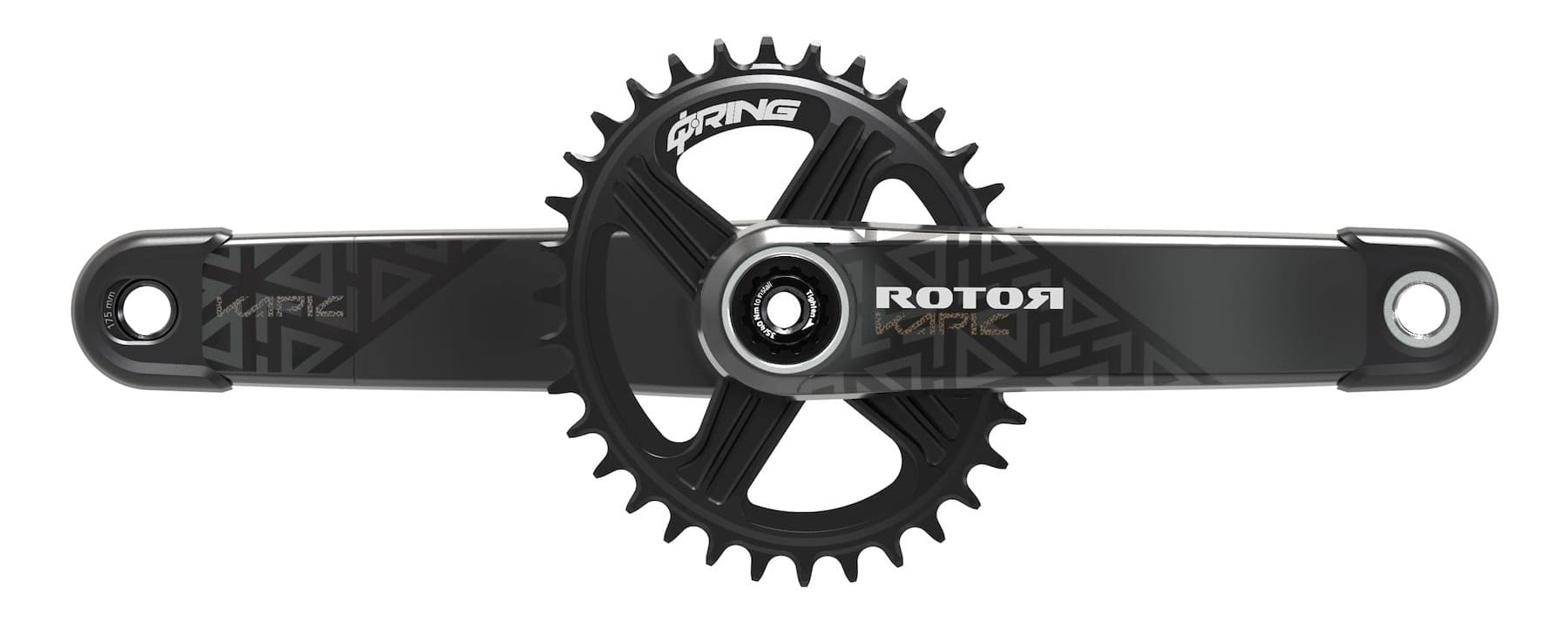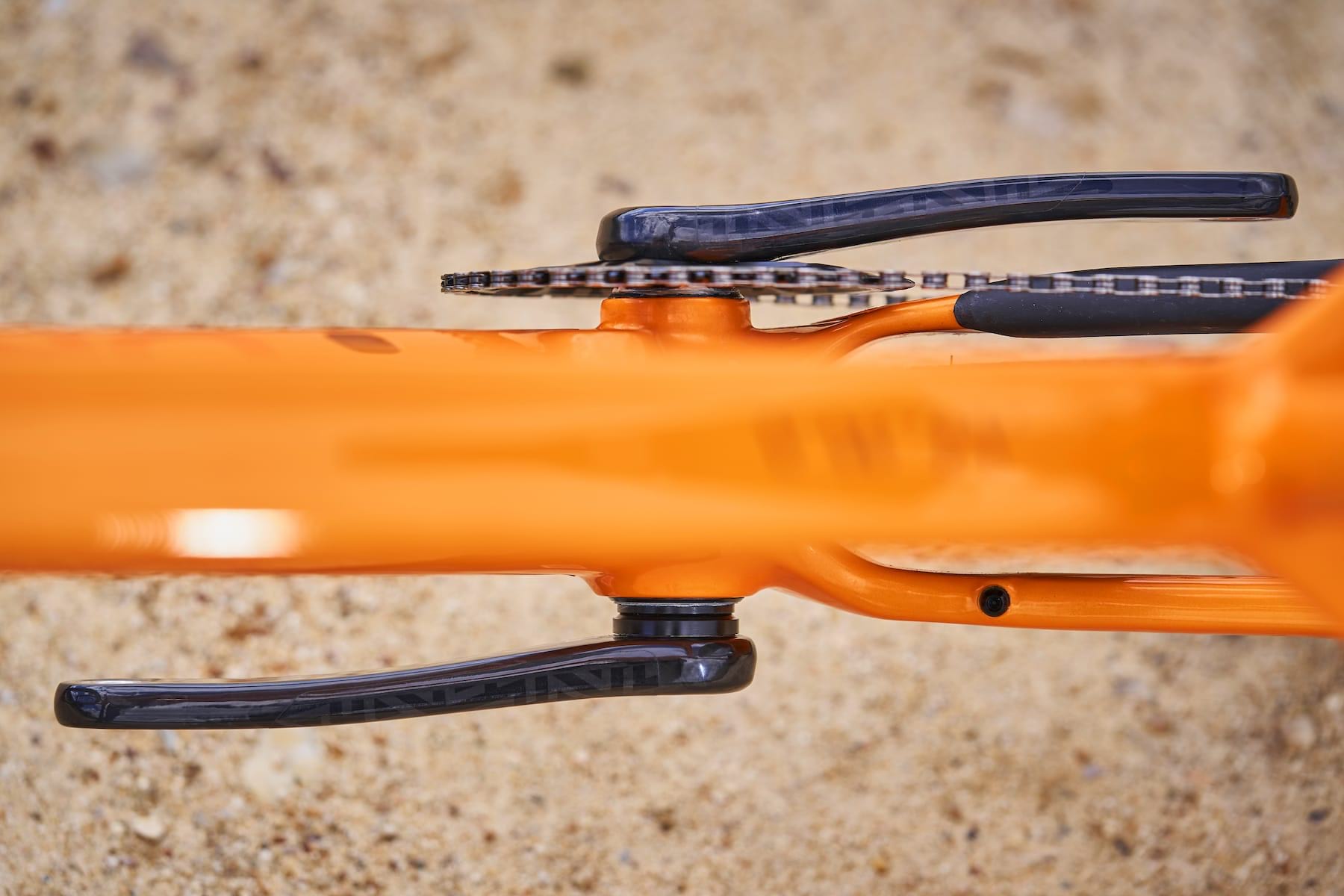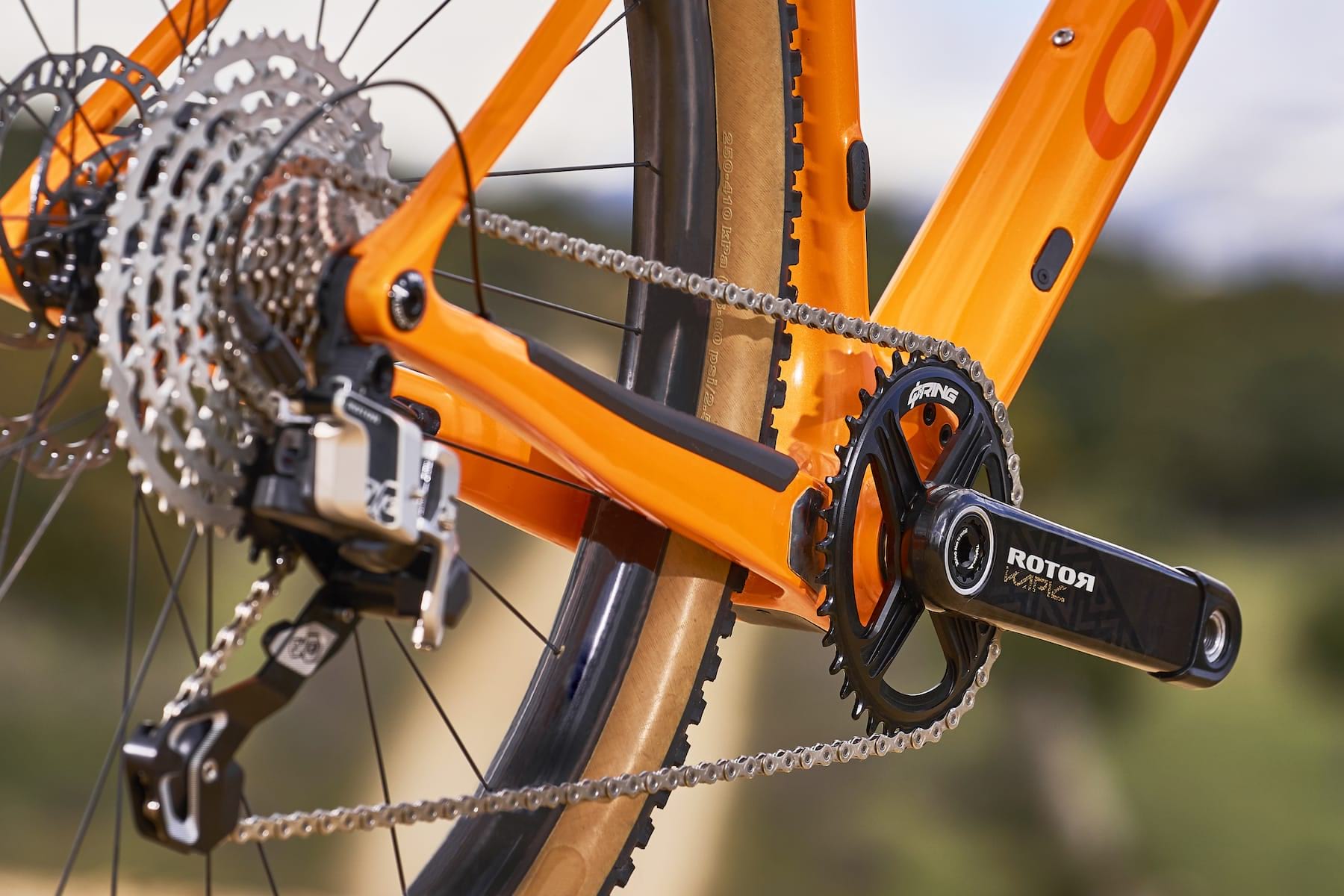Rotor rolls out Kapic Carbon – its lightest and stiffest mountain bike crankset ever
Spanish drivetrain manufacturer, Rotor Components, recently revealed its first ever carbon fibre crankset; the new Kapic Carbon.
At just 429g including a 32t chainring, the Kapic Carbon is the lightest, and purportedly stiffest, crankset that Rotor has ever produced. If the claimed weight is correct, that will make for a healthy weight drop over the current alloy Kapic crankset, which is claimed to weigh 545g for the same spec.
Relative to other big drivetrain manufactures, it does put the Kapic Carbon literally 1g over the weight of the latest Race Face Next SL cranks, and 9g over the weight of a SRAM XX1 Eagle DUB crankset. However, it is quite a bit lighter than the 511g Shimano XTR Race M9100 crankset.
Like the alloy Kapic, the carbon version is built around a hollow 30mm diameter axle that bolts to the arms via Rotor’s own splined interface. The chainring is designed to mount directly to the drive-side arm using the Optimum Chainring Position (OCP) system.
For a regular round chainring, this system makes for simple one-bolt attachment. For the oval-shaped Q Ring though, the OCP design allows you to adjust the ‘timing’ of the chainring.

Rotor Kapic Carbon Crank Specs
- Carbon fibre crank arms
- Direct mount OCP (Optimum Chainring Position) chainring design
- Available with round chainrings (26-40t) and oval Q Rings (26-40t)
- 30mm diameter alloy spindle
- Compatible with threaded BSA, BB92, BB30 & PF30 bottom bracket shells
- Chainline: 52mm (Boost), 56.5mm (Super Boost)
- Q-Factor: 169.5mm (Boost), 178.5mm (Super Boost)
- Arm lengths: 165, 170 & 175mm
- Claimed weight: 429g (175mm arms & 32t chainring, no BB)
- RRP: $499 USD / £TBC
Rotor 1×13 Groupset Incoming
The Rotor Kapic Carbon crankset arrives as a precursor to the commercial release of Rotor’s innovative 1×13 groupset. Shown at Eurobike last year, this drivetrain centres around a 13-speed cassette with an enormous 10-52t range (smaller cassette sizes are also available).
To up the weird factor even further, the drivetrain features a hydraulic trigger shifter and rear mech to shift the chain over those 13 sprockets.
The drivetrain we saw at Eurobike was in very early prototype form, though the road and CX versions have started appearing in the market in the last month. Rotor has now shifted (ha!) its attention to the MTB version, and we’re told that production components won’t be too far away.
Head to the Rotor Bike website for more info.







